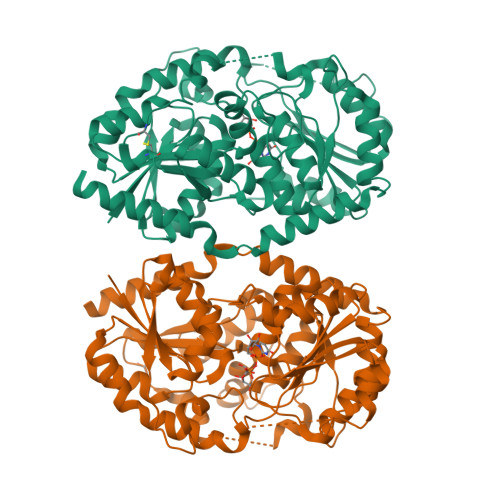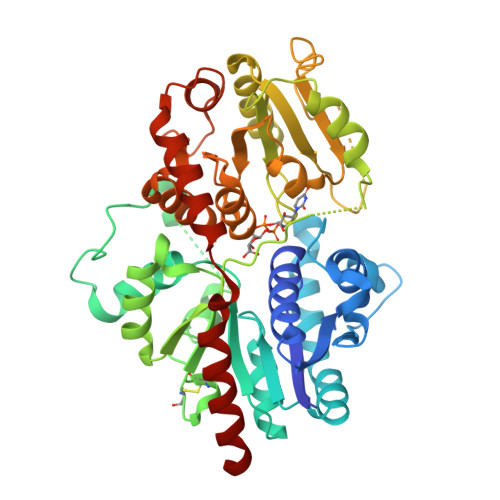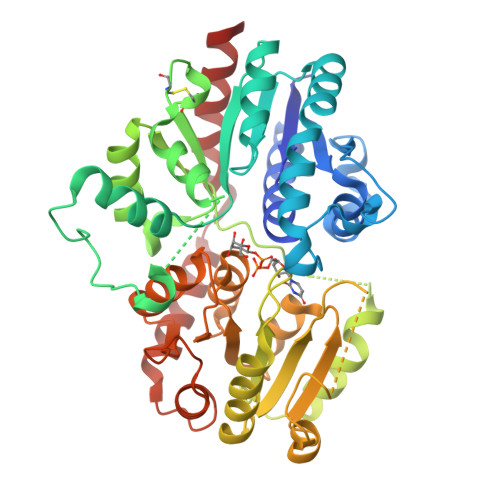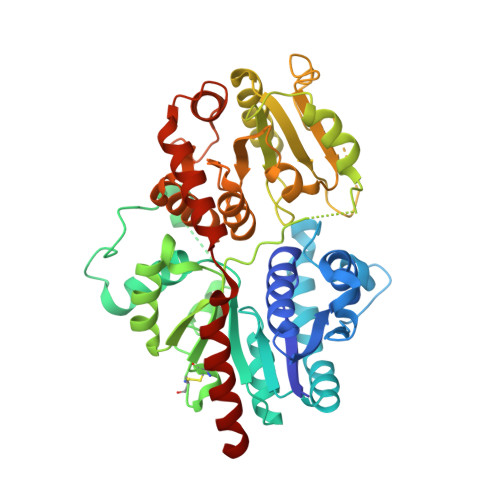Structural insights into the catalytic selectivity of glycosyltransferase SgUGT94-289-3 towards mogrosides.
Cui, S., Zhang, S., Wang, N., Su, X., Luo, Z., Ma, X., Li, M.(2024) Nat Commun 15: 6423-6423
- PubMed: 39080270
- DOI: https://doi.org/10.1038/s41467-024-50662-w
- Primary Citation of Related Structures:
8HJF, 8HJG, 8HJH, 8HJK, 8HJL, 8HJN, 8HJO, 8HJP, 8HJQ, 8J66 - PubMed Abstract:
Mogrosides constitute a series of natural sweeteners extracted from Siraitia grosvenorii fruits. These mogrosides are glucosylated to different degrees, with mogroside V (M5) and siamenoside I (SIA) being two mogrosides with high intensities of sweetness. SgUGT94-289-3 constitutes a uridine diphosphate (UDP)-dependent glycosyltransferase (UGT) responsible for the biosynthesis of M5 and SIA, by continuously catalyzing glucosylation on mogroside IIe (M2E) and on the subsequent intermediate mogroside products. However, the mechanism of its promiscuous substrate recognition and multiple catalytic modes remains unclear. Here, we report multiple complex structures and the enzymatic characterization of the glycosyltransferase SgUGT94-289-3. We show that SgUGT94-289-3 adopts a dual-pocket organization in its active site, which allows the two structurally distinct reactive ends of mogrosides to be presented from different pockets to the active site for glucosylation reaction, thus enabling both substrate promiscuity and catalytic regioselectivity. We further identified a structural motif that is essential to catalytic activity and regioselectivity, and generated SgUGT94-289-3 mutants with greatly improved M5/SIA production from M2E in an in vitro one-pot setup.
Organizational Affiliation:
Institute of Medicinal Plant Development, Chinese Academy of Medical Sciences and Peking Union Medical College, 100193, Beijing, PR China.




















